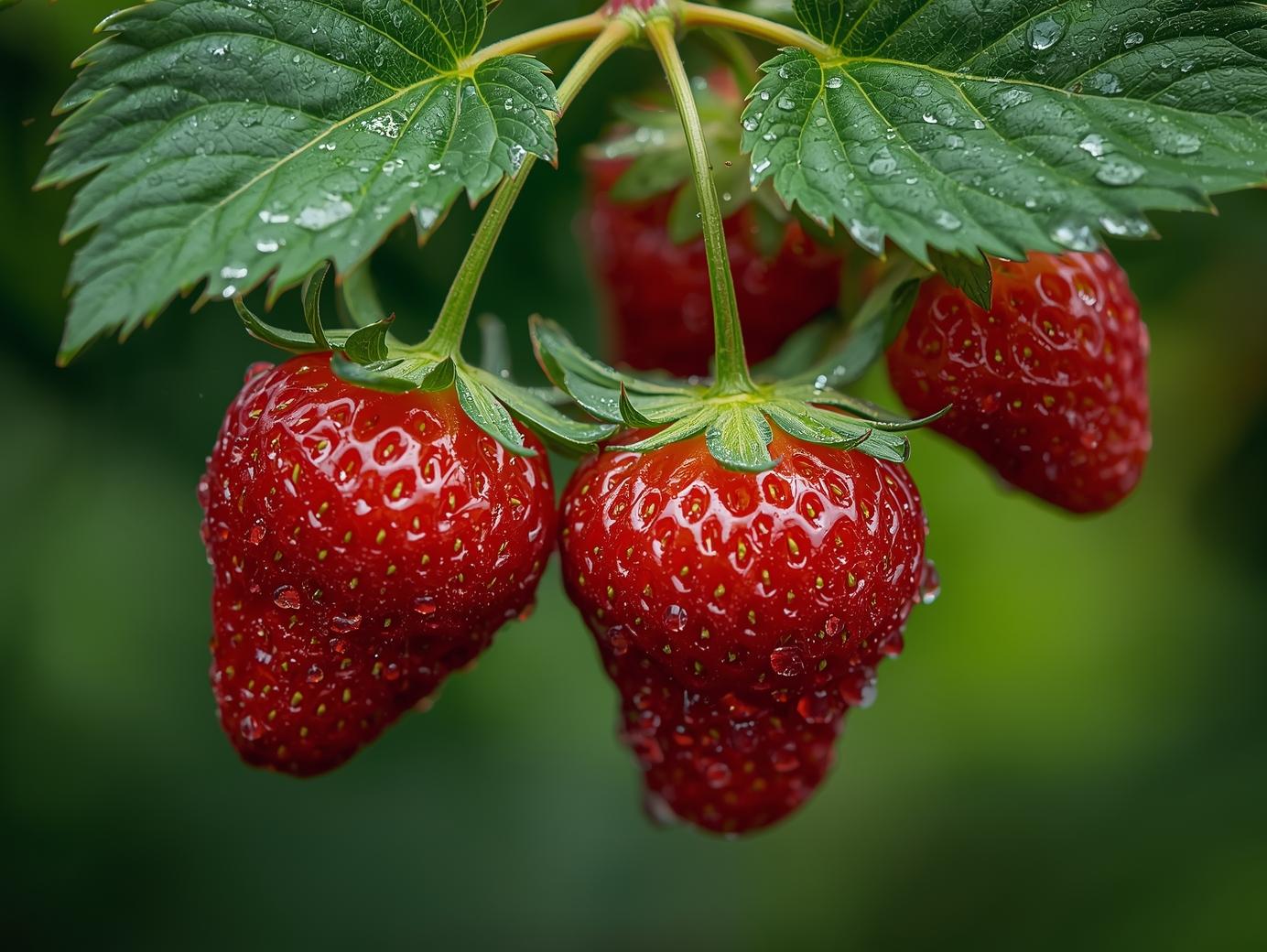Strawberries are among the most popular and rewarding fruits to grow in home courtyards across the USA. These sweet, juicy berries not only add vibrant color to your garden but also provide fresh, nutritious fruit that can be enjoyed straight from the plant. With the right care and attention to detail, strawberry plants can flourish in small spaces, making them ideal for urban and suburban gardeners looking to maximize their outdoor area.
This guide covers essential aspects of strawberry cultivation, including soil selection, planting, watering, and pest control, helping you create a thriving strawberry patch that yields abundant harvests season after season.
Soil Selection
Strawberries thrive in well-draining, sandy loam soils rich in organic matter. The ideal soil pH for strawberries ranges from 5.5 to 6.8, which allows optimal nutrient absorption and healthy plant growth. Heavy clay soils or poorly drained areas should be avoided, as excess moisture can lead to root diseases like rot and mildew.
To prepare your courtyard soil for strawberries, incorporate ample organic compost or aged manure to improve texture and fertility. Performing a soil test before planting can help you identify any nutrient deficiencies or pH imbalances, ensuring your soil conditions are ideal for growing healthy and productive strawberry plants.
Site Preparation
Choosing the right site in your courtyard is critical for strawberry success. Strawberries require full sun, meaning at least six to eight hours of direct sunlight daily, to produce sweet, flavorful berries. Good air circulation around the planting area helps prevent fungal diseases common to strawberries.
Before planting, clear the site of weeds and debris, then loosen the soil to a depth of about 8 to 10 inches. Adding organic matter such as compost during site preparation enriches the soil and promotes strong root growth. Raised beds or containers are excellent options for courtyards with limited space or poor soil conditions, providing better drainage and easier maintenance.
Planting
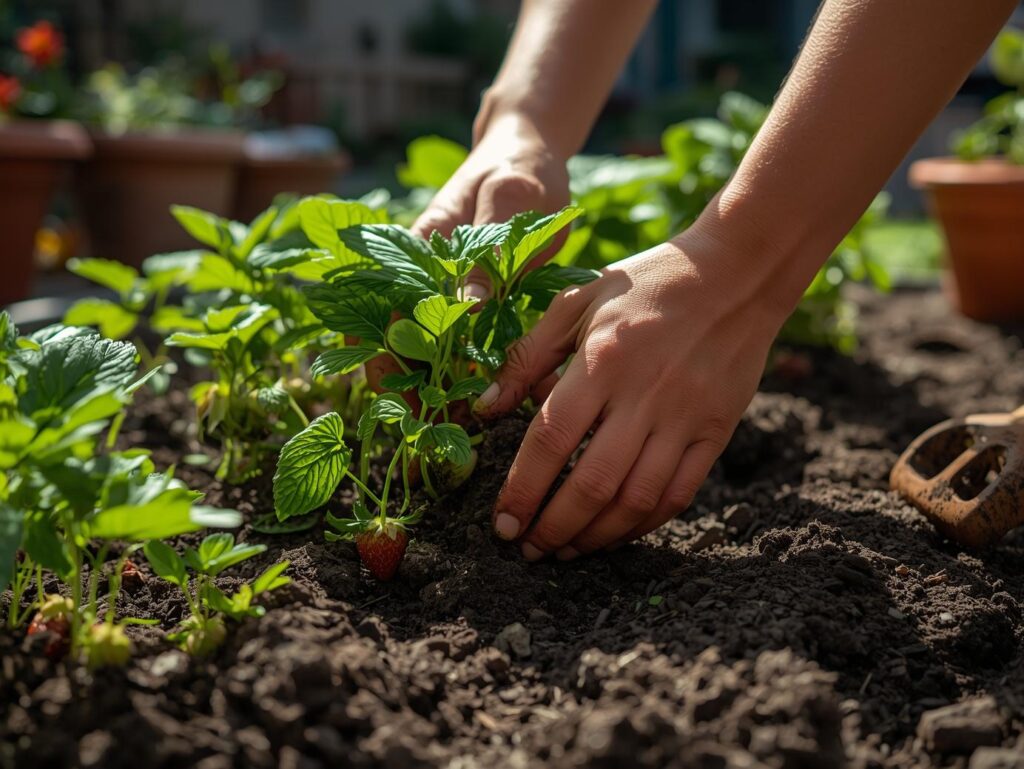
The best time to plant strawberries in the USA is early spring, after the danger of frost has passed. Select healthy, disease-free plants or bare-root strawberry crowns for planting. Space the plants about 12 to 18 inches apart to allow enough room for runners to spread and develop.
When planting, make sure the crown—the part where the roots meet the stem—is positioned just above the soil surface. Planting too deep can cause crown rot, while planting too shallow can expose roots and dry them out. After planting, water the plants thoroughly to settle the soil and support root establishment.
Watering
Consistent watering is essential for strawberry plants, especially during flowering and fruit development. Strawberries require about 1 to 1.5 inches of water per week, delivered through deep, infrequent watering to encourage strong root systems.
Avoid overhead watering to reduce the risk of fungal diseases and instead use drip irrigation or water at the base of the plants. Mulching with straw or pine needles helps retain soil moisture, suppress weeds, and keep fruit clean. It also protects roots during colder months in regions with harsh winters.
Fertilizing
Strawberries benefit from regular fertilization to maintain vigorous growth and maximize fruit production. Before planting, work a balanced fertilizer into the soil to provide essential nutrients. During the growing season, applying a nitrogen-rich fertilizer in early spring encourages healthy leaf and runner development.
After the first fruiting period, a second application of fertilizer can help sustain plant energy for continued growth and berry production. Organic fertilizers like compost tea or fish emulsion are excellent choices for providing nutrients while improving soil health. Always avoid over-fertilizing, which can lead to excessive foliage and reduced fruit quality.
Pruning & Training
Pruning strawberry plants primarily involves managing runners and removing old leaves. Runners are horizontal stems that create new plants, and managing them helps control plant density and encourages better fruit production from the mother plants.
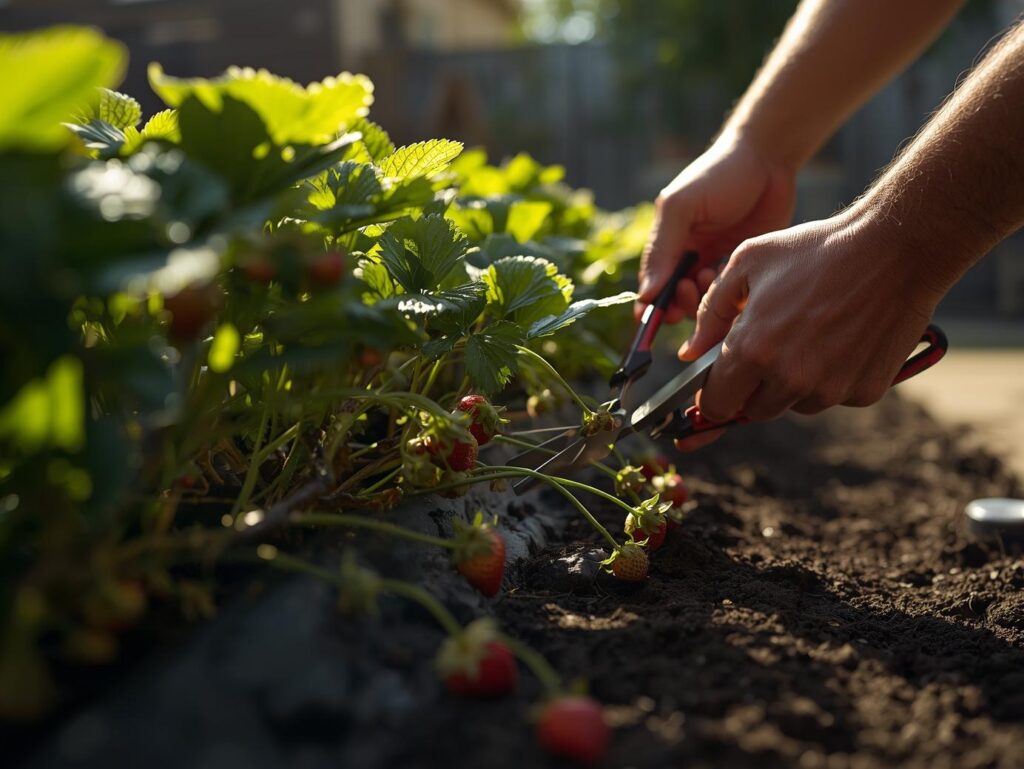
Remove runners if you want larger berries, as allowing too many new plants can reduce fruit size. Cut back old leaves after the growing season to reduce disease risk and prepare the plants for dormancy. Training strawberries in raised beds or containers also aids in better airflow and sunlight exposure, promoting healthier plants and easier harvesting.
Pest & Disease Control
Strawberries are vulnerable to various pests, including aphids, slugs, and spider mites, as well as diseases such as powdery mildew and gray mold. Regular monitoring and early intervention are crucial to maintaining healthy plants and preventing crop loss.
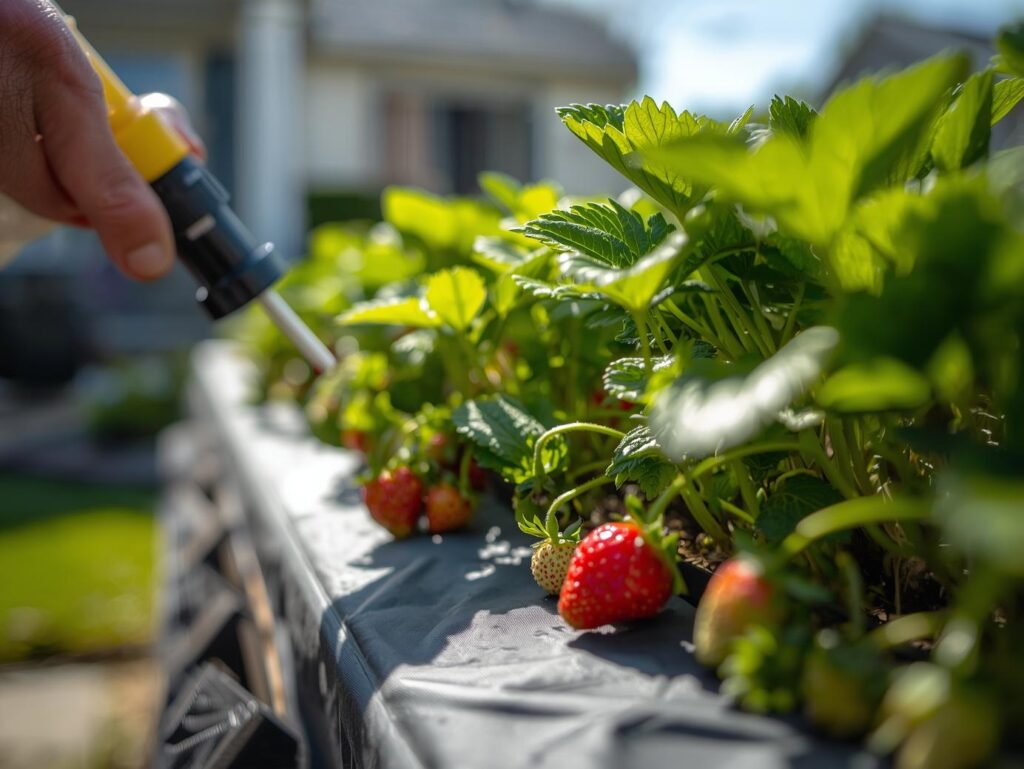
Cultural practices like proper spacing, mulching, and crop rotation reduce pest and disease pressure. Natural predators and organic pest controls can help manage insect populations without harming beneficial organisms. Removing infected plant material promptly prevents the spread of diseases throughout the patch.
Fruiting & Harvest
Strawberries usually begin fruiting about four to six weeks after flowering. Harvest the berries when they are fully red, plump, and fragrant for the best flavor and sweetness. Picking in the morning, when the fruit is cool, helps maintain freshness.
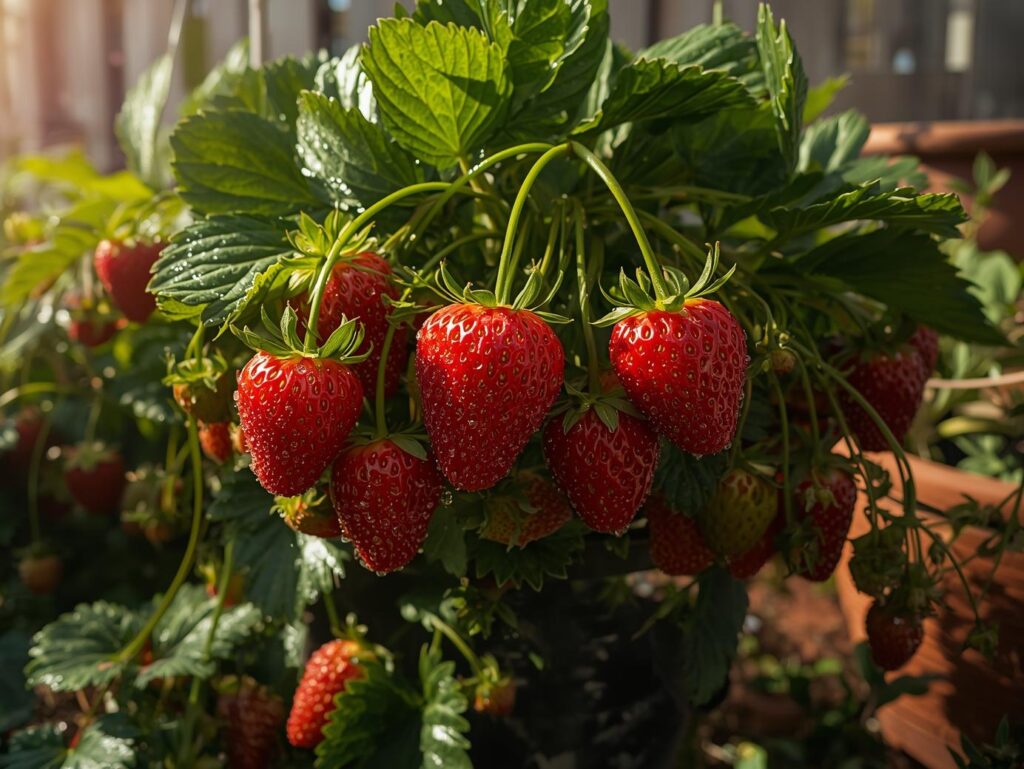
Regular harvesting encourages the plants to produce more fruit throughout the season. Be gentle when picking to avoid bruising the delicate berries. Fresh strawberries can be enjoyed raw, frozen, or used in cooking and preserves, making your homegrown harvest a delicious reward for your gardening efforts.
